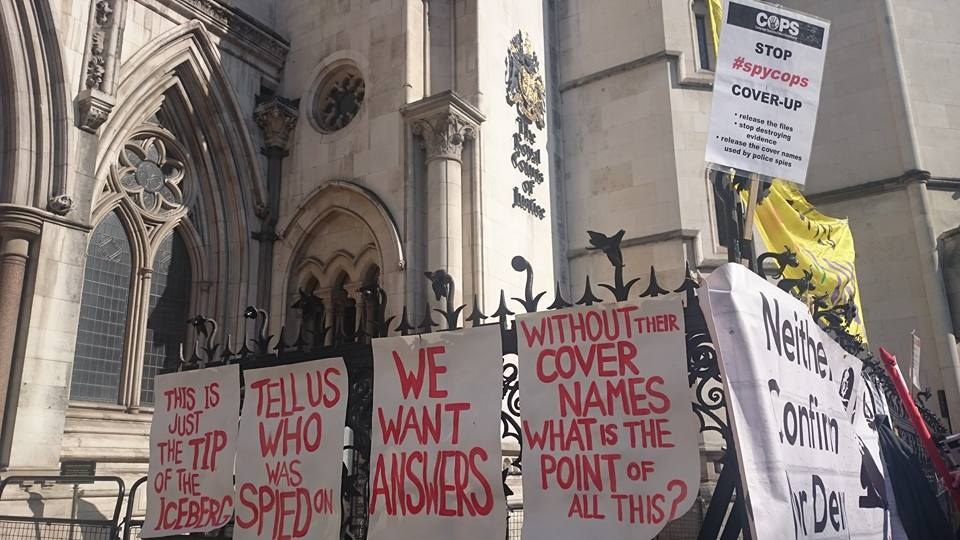Last Thursday, the Court of Appeal heard argument in R (Palestine Action) v Secretary of State for the Home Department. The dispute wasn’t about whether proscribing ‘Palestine Action’ was justified, but about where such challenges should be heard: by judicial review in the Administrative Court, or through the Proscribed Organisations Appeal Commission (POAC), the specialist tribunal Parliament created. Michael Mannering attended the hearing. Judgment is reserved.
That choice matters. It determines how quickly people can clear their names, whether criminal liability continues while appeals unfold, and whether Parliament’s ‘alternative remedy’ offers real justice, or becomes a procedural trap.
What proscription does
Under the Terrorism Act 2000, the Home Secretary can proscribe an organisation believed to be ‘concerned in terrorism’ (s 3(3)(a)), with Parliament’s approval (s 123). From that moment, membership, support, and certain associations become criminal.
There is a statutory route to challenge: apply to de-proscribe (s 4), and if refused, appeal to POAC (s 5). POAC applies judicial review standards and can handle closed material procedures with special advocates.
The key limitation? Even if a group is de-proscribed later, section 7 says the criminal consequences only end from the date of removal, not retroactively. Time spent under an unlawful listing is not undone.
Why the forum matters
Palestine Action was proscribed in July 2025, two months before the hearing. Instead of seeking de-proscription, it brought a judicial review directly. The Home Office argued this should not be allowed: Parliament built POAC for this kind of challenge, so JR should be exceptional. They stressed that ss 4-5 are framed as ‘may’, creating a right to use the route rather than a duty, but said the Act’s detailed, multi-stage design shows Parliament expected de-proscription and POAC to be the usual track.
Crucially, when the 2000 Act was passed there was no statutory closed-material regime in civil courts (the Justice and Security Act arrived only in 2013). POAC was purpose-built with special advocates so sensitive material could be considered. On that logic, Parliament designed POAC to be the primary forum.
In practice, the statutory scheme introduces serious delays. The Secretary of State has up to 90 days to respond to a de-proscription request, and POAC proceedings can stretch longer. Meanwhile, criminal liability applies from the moment of proscription.
Even if POAC eventually allows an appeal, the relief is only prospective. There is no undoing of the criminal risk faced in the interim. POAC is not designed to quash the original proscription ab initio in the way the Administrative Court can. And its closed processes make public scrutiny and third-party input more difficult.
In court, the judges tested both sides. The key question: is a remedy that offers only delayed, prospective relief truly ‘adequate’ when people face immediate criminal exposure? If not, requiring POAC-first risks structural injustice.
Equality and purpose skirmishes
Two merits issues surfaced. First, the Equality Act: the claimants said the Home Secretary failed to consider the distinct impact on Palestinians in Britain (a racial/ethnic group) as required by s 149, rather than on ‘Muslims’, ‘smaller communities’, or generic ‘supporters of the Palestinian cause’. The court probed whether the duty’s limbs beyond fostering good relations were engaged, given immediate criminalisation and chilling effects.
Second, improper purpose: the claimants argued that even if Palestine Action meets the statutory definition, Parliament never intended this draconian regime to reach less severe, non-violent conduct. The bench pressed whether that complaint sounds in proportionality/irrationality rather than true “purpose” error.
A Procedural Flashpoint: CPR 52.8
There was a sharp exchange about appeal procedure. The claimants sought to revive JR grounds for which permission had been refused below. Did they need to challenge that refusal within seven days under CPR 52.8 (the seven-day rule for challenging refusals of permission in JR), or could it wait for a respondent’s notice? The panel indicated the seven-day route applies to refusals of permission, invited a formal extension application (not Denton relief), and set a rapid timetable. Whether those extra grounds make it into the November fixture now matters to what can be argued in open court.
Openness and Access to Justice
At the end of the hearing, the court invited parties to say by 4pm Monday whether a special advocates’ note could be put into the open (with follow-on directions if so). A small but telling transparency step in litigation where much may otherwise be closed.
Not alone?
The broader trend is clear: rights claims are increasingly channelled into specialist or closed forums. Think of the narrowing of Cart judicial reviews (Judicial Review and Courts Act 2022) or the spread of closed material procedures (Justice and Security Act 2013). Each change may be defensible alone; together they make it harder to challenge power openly and in time. When the underlying measure criminalises association and expression, delay and opacity are not neutral, they are substantive harms.
Courts could preserve JR as a backstop in exceptional cases where statutory remedies are slow and prospective only. They might press for firm timelines on de-proscription decisions and POAC appeals where Articles 10 and 11 rights are at stake, and clarify collateral challenge so criminal defendants can test proscription before convictions mount. If necessary, Parliament should revisit s 7’s prospectivity rule.
Why it matters
For protesters, and those who support them lawfully, forum determines freedom. A system that routes challenges through slow, closed, prospective-only channels leaves people exposed and chills expression. That is a procedural trap.
Judgment is expected in October, ahead of a listed hearing in late November. Watch for how the court defines ‘adequacy’, how it treats the s 7 prospectivity gap, and whether it signals a path for criminal defendants to challenge proscription before the damage is done.








